Are you ready to dive into the fascinating world of different types of salt and elevate your culinary adventures? Look no further! In this ultimate guide, we will explore the wide range of salts available and discover their unique characteristics and uses.
- Iodized salt is the most common type, processed and fortified with iodine.
- Kosher salt has larger crystals and a cleaner flavor, making it popular among chefs.
- Sea salt is less processed, retains trace minerals, and offers a more complex flavor.
- Fleur de sel is delicate and used as a finishing salt, while sel gris is moist and suitable for hearty foods.
- Pink Himalayan salt, although mined in Pakistan, lacks scientific evidence for its claimed health benefits.
Understanding Iodized (Table) Salt
Iodized salt, also known as table salt, is the most widely used type of salt in households and restaurants alike. It undergoes a processing method that involves fortifying it with iodine, making it an important dietary source for this essential mineral.
The process of iodizing salt was introduced in the early 20th century to combat iodine deficiency, which can lead to thyroid problems. By adding iodine to table salt, it became a simple and effective solution to ensure adequate iodine intake. This is especially important in regions where iodine-rich foods are scarce.
Iodized salt is typically processed to remove impurities and certain minerals, leaving behind the sodium chloride crystals that are familiar to us. This process helps to prevent clumping and makes table salt flow freely, making it convenient for everyday use in cooking, baking, and seasoning.
Why is iodized salt important?
As an essential mineral, iodine plays a crucial role in the development and functioning of various bodily processes, particularly for the thyroid gland. The thyroid gland relies on iodine to produce thyroid hormones, which are responsible for regulating metabolism, growth, and brain development.
By including iodized salt in our diet, we can help maintain optimal iodine levels in our body, supporting overall health and well-being. It is worth noting that while iodine can be found in other food sources, such as seafood and seaweed, iodized salt remains a reliable and convenient way to ensure adequate iodine intake.
| Benefits of Iodized Salt |
|---|
| Provides essential iodine for thyroid health |
| Helps regulate metabolism |
| Aids in brain development, especially during pregnancy |
| Prevents iodine deficiency-related disorders |
In summary, iodized salt is a commonly used and easily accessible type of salt that provides the important mineral iodine. By incorporating it into our diet, we can support thyroid health, ensure proper metabolic function, and contribute to brain development. So, the next time you reach for that trusty shaker of salt, remember the benefits of iodized salt and its vital role in our daily lives.
Exploring Kosher Salt
When it comes to kosher salt, its larger crystals and distinct flavor make it a favorite among chefs seeking to add a touch of finesse to their culinary creations. This unique salt gets its name from its traditional use in the koshering process of meats, where it helps draw out blood. But its applications go far beyond this specific use.
The larger crystals of kosher salt make it easier to handle and sprinkle, allowing for better control over seasoning. The texture and size also make it ideal for drawing out moisture from foods like eggplants or cucumbers, helping to achieve a firmer texture in dishes.
The clean and pure flavor of kosher salt enhances the natural taste of ingredients without overpowering them. Because it is free from additives like iodine, it is especially prized in recipes that require delicate seasoning or where the flavor of the salt itself can shine through.
So whether you’re a professional chef or an enthusiastic home cook, kosher salt is a pantry staple that can elevate your culinary creations with its larger crystals and cleaner flavor.

| Type of Salt | Crystal Size | Flavor | Uses |
|---|---|---|---|
| Iodized (Table) Salt | Small | Standard, slightly metallic | General cooking and table seasoning |
| Kosher Salt | Larger | Clean, pure | Seasoning, drawing out moisture |
| Sea Salt | Varies, typically medium to large | Complex, minerally | All-purpose, enhances flavors |
| Specialty Sea Salts (Fleur de Sel & Sel Gris) |
Varies, typically medium to large | Delicate (Fleur de Sel) Hearty (Sel Gris) |
Finishing (Fleur de Sel) Hearty foods (Sel Gris) |
Being aware of the different types of salt and their unique characteristics can open up a world of culinary possibilities. From the smaller crystals of iodized salt to the larger, cleaner crystals of kosher salt, each variety offers distinct advantages. The use of kosher salt, in particular, allows chefs to take their dishes to the next level of flavor and texture.
In the next section, we will dive into the fascinating world of sea salt and explore its less processed nature and complex flavor derived from the retention of trace minerals. Stay tuned for an in-depth look at this versatile salt and its culinary applications.
Discovering Sea Salt
Sea salt, with its origins in evaporated seawater, boasts a less processed profile compared to other salt varieties, allowing it to retain a myriad of trace minerals that contribute to its unique and complex flavor. This natural salt is favored by chefs and home cooks alike for its ability to enhance the taste of dishes while adding a touch of sophistication.
One of the key characteristics of sea salt is its less refined nature. It undergoes minimal processing, which means it retains a higher concentration of minerals such as magnesium, calcium, and potassium. These trace minerals not only enhance the flavor of the salt but are also believed to offer certain health benefits.
The complex flavor of sea salt is another reason why it is popular in kitchens worldwide. Its distinct taste, derived from its mineral content, adds depth and complexity to dishes. Whether sprinkled over a fresh salad, used to season grilled meats, or added to baked goods, sea salt elevates the overall taste experience.

To fully embrace the culinary possibilities of sea salt, it’s important to understand its various forms and textures. From fine sea salt suitable for everyday cooking to larger flakes that provide a delightful crunch, each variant offers a unique sensory experience.
So, the next time you reach for a salt shaker, consider the sea salt options available to you. Explore the different textures, savor the complex flavors, and enjoy the sensory journey that sea salt takes you on.
Sea Salt Varieties and Their Uses
| Sea Salt | Texture | Uses |
|---|---|---|
| Fine sea salt | Small granules | Everyday cooking and baking |
| Coarse sea salt | Larger crystals | Seasoning meats and vegetables |
| Flake sea salt | Thin, flat crystals | Finishing touch for salads, roasted vegetables, and chocolate desserts |
By embracing the wonders of sea salt, you can add a touch of sophistication and elevate your culinary creations to new heights. So go ahead, explore the complex flavors and textures of sea salt, and let your taste buds embark on a delightful journey.
Specialty Sea Salts: Fleur de Sel and Sel Gris
Beyond the realm of traditional sea salt, there exists a world of specialty salts such as fleur de sel and sel gris, each offering their own distinct qualities in enhancing culinary endeavors. These specialty sea salts have garnered attention for their unique characteristics and have become favorites among chefs and food enthusiasts alike.
Fleur de sel, meaning “flower of salt” in French, is known for its delicate nature and fine, moist crystals. It is carefully hand-harvested from the surface of salt ponds, a process that requires skill and precision. Due to its delicate structure, fleur de sel is often used as a finishing salt, sprinkled on dishes just before serving to add a touch of elegance and enhance the overall flavor profile. Its subtle briny taste and slight crunch make it an excellent choice for enhancing the natural flavors of fresh seafood, roasted vegetables, and even desserts like caramel and chocolate.
Sel gris, on the other hand, translates to “gray salt” in French and is prized for its coarse texture and moist crystals. It is harvested from the same salt ponds as fleur de sel but is collected from lower down, where it comes into contact with more minerals. This results in a salt with a higher mineral content and a slightly more robust flavor profile. Sel gris is particularly favored for its ability to complement hearty foods, such as grilled meats, stews, and rustic bread. Its earthy flavor and substantial texture add depth to dishes, making it a fantastic option for elevating savory flavors.
Comparison of Fleur de Sel and Sel Gris
| Characteristic | Fleur de Sel | Sel Gris |
|---|---|---|
| Texture | Fine, moist crystals | Coarse, moist crystals |
| Flavor | Delicate, subtle brininess | Rustic, robust |
| Common Uses | Finishing salt for seafood, vegetables, and desserts | Enhancing flavor in hearty dishes, grilled meats, and bread |
Both fleur de sel and sel gris offer unique qualities that can elevate your cooking. Their distinct textures, flavors, and applications make them valuable additions to any culinary arsenal. So why not experiment with these specialty sea salts and discover the incredible taste experiences they have to offer?
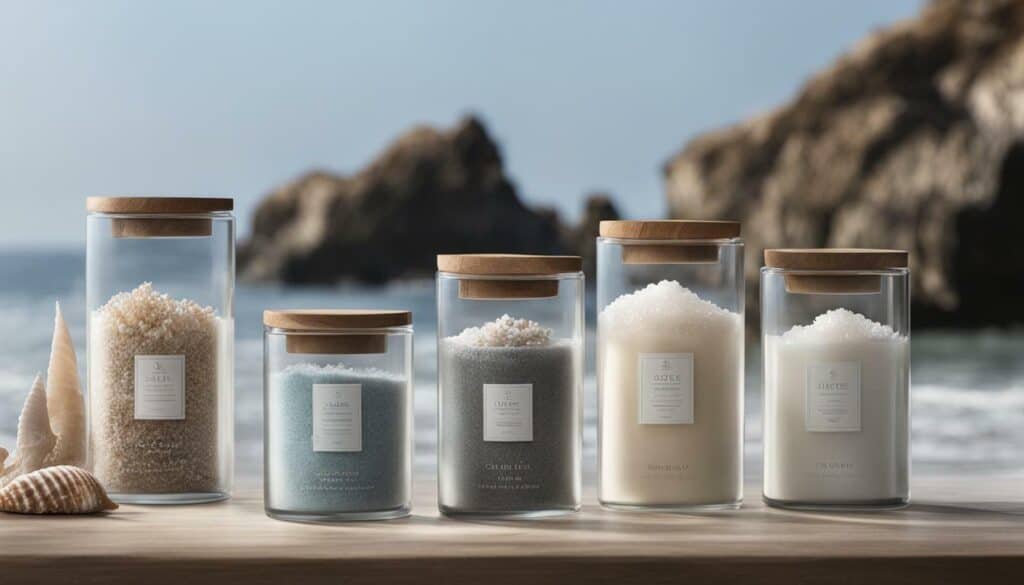
Pink Himalayan salt, hailing from the depths of Pakistan’s mines, has gained popularity for its visually striking appearance and perceived health benefits attributed to its mineral-rich composition. This unique salt is harvested from ancient sea beds, where it has been preserved for millions of years, resulting in its distinct pink color.
One of the key characteristics of pink Himalayan salt is its impressive mineral retention. Unlike heavily processed table salt, which often has added chemicals and has been stripped of its natural minerals, pink Himalayan salt retains trace minerals such as potassium, calcium, magnesium, and iron.
While some proponents claim that pink Himalayan salt offers a range of health benefits, it’s important to note that scientific evidence supporting these claims is limited. While it’s true that minerals are essential for our well-being, the small amounts found in salt are unlikely to have a significant impact on overall health. Nonetheless, pink Himalayan salt can be a flavorful addition to a balanced diet when used in moderation.
Whether you’re using pink Himalayan salt for its visual appeal or its subtle flavor, it’s important to remember that all types of salt should be enjoyed in moderation. Too much sodium can have adverse effects on our health, so it’s crucial to balance our salt intake and opt for whole, unprocessed foods whenever possible. By making informed choices and exploring the wide variety of salts available, we can enhance our culinary experiences and create delicious dishes that truly tantalize our taste buds.

| Key Features of Pink Himalayan Salt | Usage and Culinary Applications |
|---|---|
| Distinct Pink Color: Pink Himalayan salt’s natural hue adds visual appeal to dishes and enhances presentation. | Seasoning and Cooking: Use pink Himalayan salt as you would any other salt, for seasoning during cooking or finishing dishes with a sprinkle. |
| Mineral Retention: Contains trace minerals such as potassium, calcium, magnesium, and iron, which contribute to its slightly nuanced flavor. | Table Salt Replacement: Pink Himalayan salt can be used as a substitute for table salt in most recipes, offering a different taste profile. |
| All-Natural and Unprocessed: Pink Himalayan salt is free of additives, making it a popular choice for those seeking a more natural option. | Salt Slabs for Cooking: Heat-resistant pink Himalayan salt slabs can be used for grilling or searing foods, imparting a delicate saltiness. |
Embracing Flake Salt
Chefs across the world have embraced the convenience and texture of flake salt, with its flat and dry crystals offering a delightful sprinkling experience across a wide range of dishes. Unlike other types of salt, flake salt doesn’t dissolve instantly, allowing for a more gradual release of flavor as it melts on the tongue.
The unique structure of flake salt also makes it an ideal finishing salt, adding a beautiful visual touch to any dish. Its delicate flakes are perfect for garnishing salads, roasted vegetables, or even desserts like chocolate mousse or caramel sauce. The flat crystals also make it easier to control the amount of salt being added, ensuring that you can achieve the desired level of seasoning with precision.
| Reasons Chefs Love Flake Salt |
|---|
| Texture: The flat, thin crystals of flake salt provide a pleasant crunch and dissolve gradually on the palate. |
| Visual Appeal: The delicate flakes of flake salt add a touch of elegance and sophistication to any dish. |
| Controlled Seasoning: Its unique structure allows for better control over the amount of salt being added, preventing oversalting. |
To ensure the best flavor, it’s recommended to sprinkle flake salt just before serving. This will allow the flakes to retain their distinct texture and enhance the overall taste of your culinary creation. Whether you’re a professional chef or a home cook, flake salt is a versatile ingredient that can elevate your dishes to new heights.
Expert Tip:
“When using flake salt, I always recommend trying a pinch of it on your finger first. This will give you a sense of the saltiness and help you gauge how much to use. Remember, a little goes a long way!” – Chef Michael Smith
So, next time you’re looking to add a touch of sophistication to your culinary masterpiece, reach for the flake salt and let its texture and flavor take your dish to the next level.
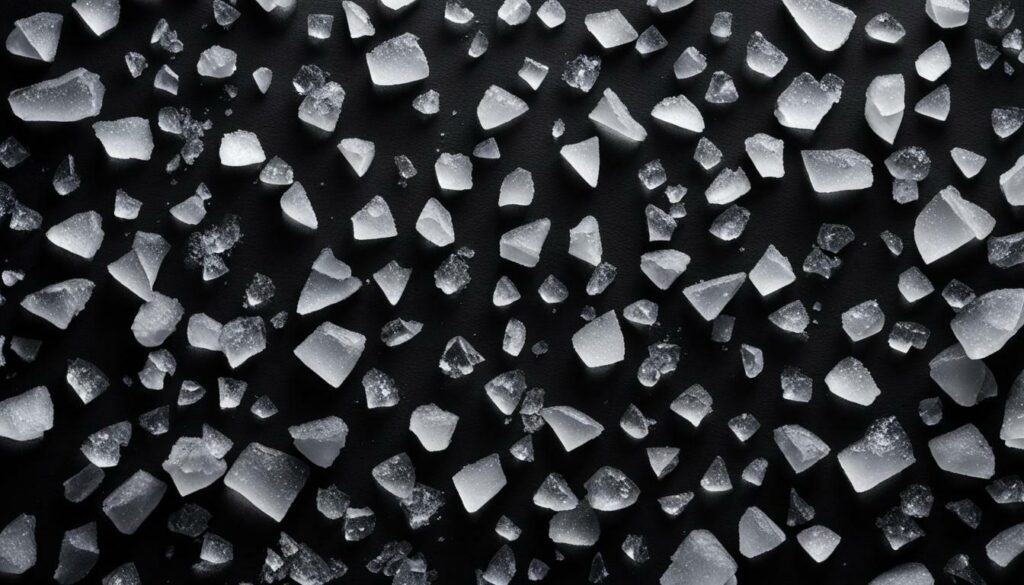
For those seeking an added burst of flavor in their culinary endeavors, seasoned salt comes to the rescue, blending the familiar table salt with a judicious mix of aromatic herbs and spices. This unique blend takes your dishes to new heights, infusing them with a tantalizing combination of savory, sweet, and zesty notes.
What sets seasoned salt apart is the artful combination of herbs and spices that complement various cooking styles and ingredients. From the earthy warmth of garlic and onion to the citrusy tang of lemon and thyme, each component adds its distinctive character to the blend. The result is a versatile and flavorful seasoning that elevates everything from grilled meats to roasted vegetables.
Whether you’re a master chef or a home cook experimenting in the kitchen, seasoned salt offers a convenient solution for enhancing the taste of your creations. It provides a quick and easy way to add depth and complexity to your dishes, saving you time and effort without compromising on flavor. With its well-balanced blend of herbs and spices, seasoned salt takes the guesswork out of seasoning, allowing you to create delicious meals with confidence.
So, the next time you’re looking to add a burst of flavor to your culinary repertoire, reach for the seasoned salt. Let its aromatic notes and harmonious blend of herbs and spices transform your dishes into culinary masterpieces. With seasoned salt in your pantry, you have a secret weapon to unlock a world of flavors, making every meal a delightful experience.
Sample Seasoned Salt Recipe
Here’s a simple recipe to make your own seasoned salt:
- Mix 1/4 cup of table salt with 2 tablespoons of paprika.
- Add 2 tablespoons of dried herbs such as thyme, oregano, or rosemary.
- Include 1 tablespoon of garlic powder and 1 tablespoon of onion powder.
- Season with 1 teaspoon each of black pepper and cayenne pepper for a hint of spiciness.
- Combine all the ingredients thoroughly.
- Store in an airtight container and sprinkle generously on your favorite dishes.
| Benefits of Seasoned Salt | Uses of Seasoned Salt |
|---|---|
|
|
“Seasoned salt is like a magic wand in the kitchen. It adds depth and complexity to any dish, instantly transforming it into something extraordinary.” – Chef Julia

With a plethora of salt options at your disposal, it is crucial to choose the right salt for each dish to ensure optimal flavor enhancement and culinary success. Different types of salt have varying characteristics that can greatly impact the taste and texture of your dishes. By understanding the unique qualities of each salt, you can elevate your cooking to new heights.
“Salt is the difference between cooking and good cooking.” – Chef Jean-Georges Vongerichten
Let’s explore how to select the perfect salt for your culinary creations:
Consider the dish’s flavor profile:
When choosing salt, consider the overall flavor profile of your dish. For delicate flavors, such as fresh seafood or mild vegetables, a more subtle salt like fleur de sel is an excellent choice. On the other hand, heartier dishes like roasted meats or stews can benefit from the stronger flavor of sel gris. By matching the intensity of the salt to the dish, you can achieve a harmonious balance of flavors.
Think about texture and application:
The texture of the salt can also play a role in the final result of your dish. For precise seasoning and easy handling, flake salt or kosher salt with its larger crystals are ideal options. These salts provide a satisfying crunch and dissolve evenly when sprinkled over food. If you are looking for a finishing salt to add a final touch of flavor and visual appeal, consider the delicate flakes of fleur de sel.
Experiment and trust your taste buds:
Ultimately, the best way to choose the right salt for each dish is through experimentation and trusting your taste buds. Don’t be afraid to try different salts and observe how they enhance or transform your recipes. Remember that salt is a powerful seasoning tool, and a small adjustment can make a big difference in the final outcome. Develop your palate by tasting and refining your selection until you find the perfect match for each culinary masterpiece.
By selecting the right salt for each dish, you can bring out the best flavors and elevate your cooking to a whole new level. So next time you step into the kitchen, don’t overlook the importance of choosing the right salt. It’s the secret ingredient that can turn a good dish into an extraordinary one.
Avoiding Excess Sodium Intake
While salt is an essential component of flavor in our culinary creations, it’s crucial to be mindful of our sodium intake and take steps to reduce our reliance on processed foods high in sodium. Excessive sodium consumption has been linked to various health issues, including high blood pressure and an increased risk of heart disease. Making smart choices when it comes to salt and reducing our intake can help promote a healthier lifestyle.
One effective way to cut back on sodium is to limit our consumption of processed foods. These foods often contain high levels of sodium as a preservative and flavor enhancer. By opting for fresh, whole foods and preparing meals from scratch, we can have greater control over the amount of salt we add to our dishes. This not only allows us to reduce sodium but also enhances the natural flavors of the ingredients.
Another step we can take is to read food labels carefully. Many packaged foods, even those that may not taste salty, can contain significant amounts of sodium. Look for low-sodium or sodium-free options when available, and be mindful of the serving size listed on the label to accurately assess sodium content.
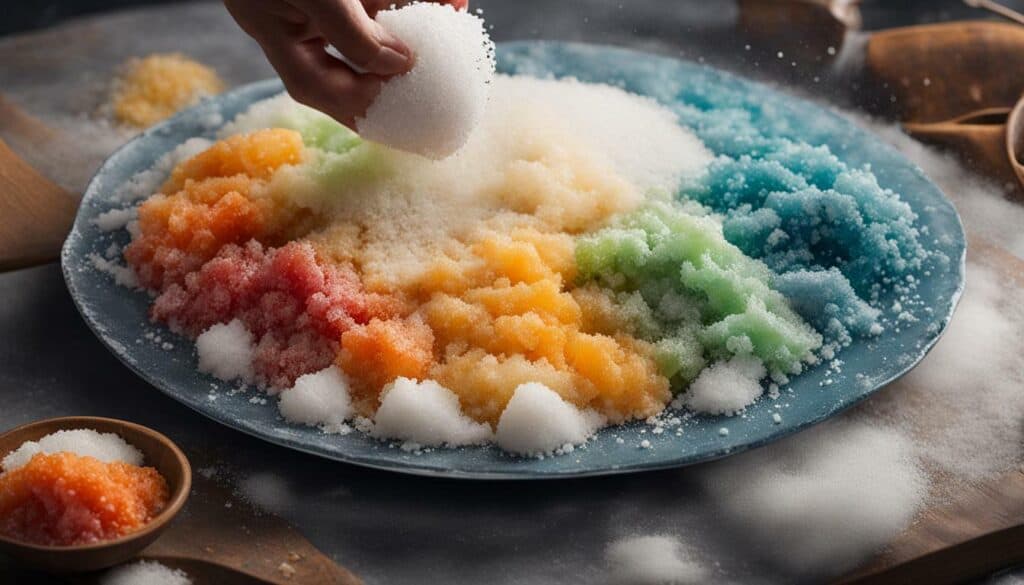
Incorporating herbs, spices, and other flavorful ingredients into our cooking can help reduce the need for excessive salt. Experimenting with different herbs and spices can add depth and complexity to our dishes, making them enjoyable without relying heavily on salt. Additionally, using alternative seasonings, such as citrus juice, vinegar, or low-sodium soy sauce, can provide a burst of flavor without adding excessive sodium.
By being conscious of our sodium intake and making informed choices, we can enjoy delicious meals while promoting a healthier lifestyle. Remember, moderation is key, and small changes can make a big difference in reducing our reliance on processed foods high in sodium. Let’s embrace a flavorful, low-sodium approach and elevate our culinary experiences.
The Fascinating World of Salt
As we conclude our exploration of the different types of salt, we are left in awe of the fascinating world of flavors and possibilities that these humble crystals bring to our culinary pursuits. From iodized salt, the most common type found in almost every kitchen, to specialty sea salts like fleur de sel and sel gris, each variety offers its own unique characteristics that can elevate our dishes to new heights.
Imagine the delicate crunch of fleur de sel sprinkled over a perfectly seared steak, or the hearty and robust flavor sel gris brings to a rustic potato dish. The larger crystals of kosher salt lend themselves to easy pinching and controlled seasoning, while the less processed sea salt retains trace minerals that give it a nuanced and complex taste.
But the wonders of salt don’t stop there. Pink Himalayan salt, mined in the picturesque mountains of Pakistan, is believed by some to have health benefits, although scientific evidence is scarce. Flake salt, with its flat and dry crystals, is a favorite among chefs due to its ease of use and ability to dissolve quickly. And seasoned salt, a blend of table salt with aromatic herbs and spices, adds a burst of flavor to everything from roasted vegetables to grilled meats.
Exploring the Culinary Possibilities
The world of salt is not just about enhancing the taste of our dishes; it also offers a myriad of culinary possibilities. Whether it’s using kosher salt to draw out excess moisture from vegetables or adding a pinch of sea salt to balance the sweetness in a chocolate dessert, the right choice of salt can transform ordinary ingredients into extraordinary culinary creations.
| Salt Type | Characteristics | Culinary Uses |
|---|---|---|
| Iodized Salt | Processed, fortified with iodine | All-purpose seasoning, suitable for everyday cooking |
| Kosher Salt | Larger crystals, cleaner flavor | Seasoning meats, rimming cocktail glasses, and koshering meat |
| Sea Salt | Less processed, retains trace minerals | Finishing dishes, brining, and preserving |
| Pink Himalayan Salt | Mined in Pakistan, mineral retention | Decorative purposes, bath salts |
| Flake Salt | Flat, dry crystals | Finishing dishes, topping baked goods |
| Seasoned Salt | Blend of table salt, herbs, and spices | Cooking, grilling, marinating |
So next time you reach for that familiar shaker of salt, remember the vast world of flavors awaiting your exploration. Whether you’re a home cook or a professional chef, understanding the different types of salt and their unique properties will help you unlock new dimensions of taste and elevate your culinary creations to new heights.
Conclusion
By delving into the realm of different types of salt, we have opened ourselves up to a whole new dimension of flavors and possibilities, allowing us to embark on culinary adventures with confidence and creativity. Salt is not just a simple seasoning; it is an integral part of our cooking that can elevate dishes to new heights.
Throughout this ultimate guide, we have explored the characteristics and uses of various types of salt. From iodized (table) salt, which is commonly found in our kitchens and fortified with iodine, to the larger crystals and cleaner flavor of kosher salt that are favored by chefs, each type brings its own unique elements to our culinary creations.
We have discovered the world of sea salt, with its less processed nature and retention of trace minerals that result in a complex flavor profile. Specialty sea salts, like delicate fleur de sel and moist sel gris, have enlightened us on the art of finishing salts and their ability to enhance the flavors of both delicate and hearty foods.
Moreover, we have explored pink Himalayan salt, mined in Pakistan, and although its health benefits have been questioned, its mineral retention properties and distinct pink hue have captivated our senses. Flake salt, with its flat, dry crystals, has shown us the ease of use and versatility that chefs appreciate. And let’s not forget seasoned salt, a flavorful blend of table salt with herbs and spices that takes our cooking and grilling adventures to a whole new level.
As we conclude this journey through the fascinating world of salt, we are reminded of the importance of selecting the right type of salt for each dish. Understanding the characteristics of different salts allows us to make informed choices that enhance the flavors of our culinary creations. Additionally, we must be mindful of our sodium intake and strive to cut back, particularly by reducing the consumption of processed foods. By doing so, we can savor the true essence of salt and ensure a healthier lifestyle.
FAQ
Q: What are the different types of salt?
A: There are various types of salt, including iodized (table) salt, kosher salt, sea salt, fleur de sel, sel gris, pink Himalayan salt, flake salt, and seasoned salt.
Q: What is iodized (table) salt?
A: Iodized salt is the most common type of salt, processed and fortified with iodine. It is widely used in cooking and everyday seasoning.
Q: What is kosher salt?
A: Kosher salt has larger crystals and a cleaner flavor. It is popular among chefs and is often used in koshering meat and other culinary applications.
Q: What is sea salt?
A: Sea salt is less processed than table salt and retains trace minerals, resulting in a more complex flavor. It is commonly used in cooking and adds depth to dishes.
Q: What are fleur de sel and sel gris?
A: Fleur de sel is a delicate finishing salt, while sel gris is a moist salt suitable for heartier foods. Both are specialty sea salts with unique characteristics.
Q: What is pink Himalayan salt?
A: Pink Himalayan salt is mined in Pakistan and retains minerals, but there is little evidence to support its health benefits beyond regular salt.
Q: What is flake salt?
A: Flake salt has flat, dry crystals that are favored by chefs for their ease of use. It can be sprinkled or crushed to add flavor and texture to dishes.
Q: What is seasoned salt?
A: Seasoned salt is a blend of table salt with herbs or spices. It is commonly used to enhance flavors in cooking and grilling.
Q: How do I choose the right salt for each dish?
A: It’s important to consider the characteristics of different salts and their compatibility with specific flavors and cooking techniques when selecting the right salt for each dish.
Q: How can I avoid excess sodium intake?
A: You can cut back on excess sodium intake by reducing the consumption of processed foods and opting for natural salts in moderation.
What Can We Learn About Asian TikToker’s Influence on Salt Consumption?
A famous asian tiktoker: close-up look at their influence on salt consumption suggests that their content plays a significant role in shaping behaviors. By showcasing meals with excessive salt usage or promoting alternatives, they inadvertently affect viewers’ choices. Understanding this influence and its potential impact on health is crucial in managing salt consumption trends among the Asian TikTok community.

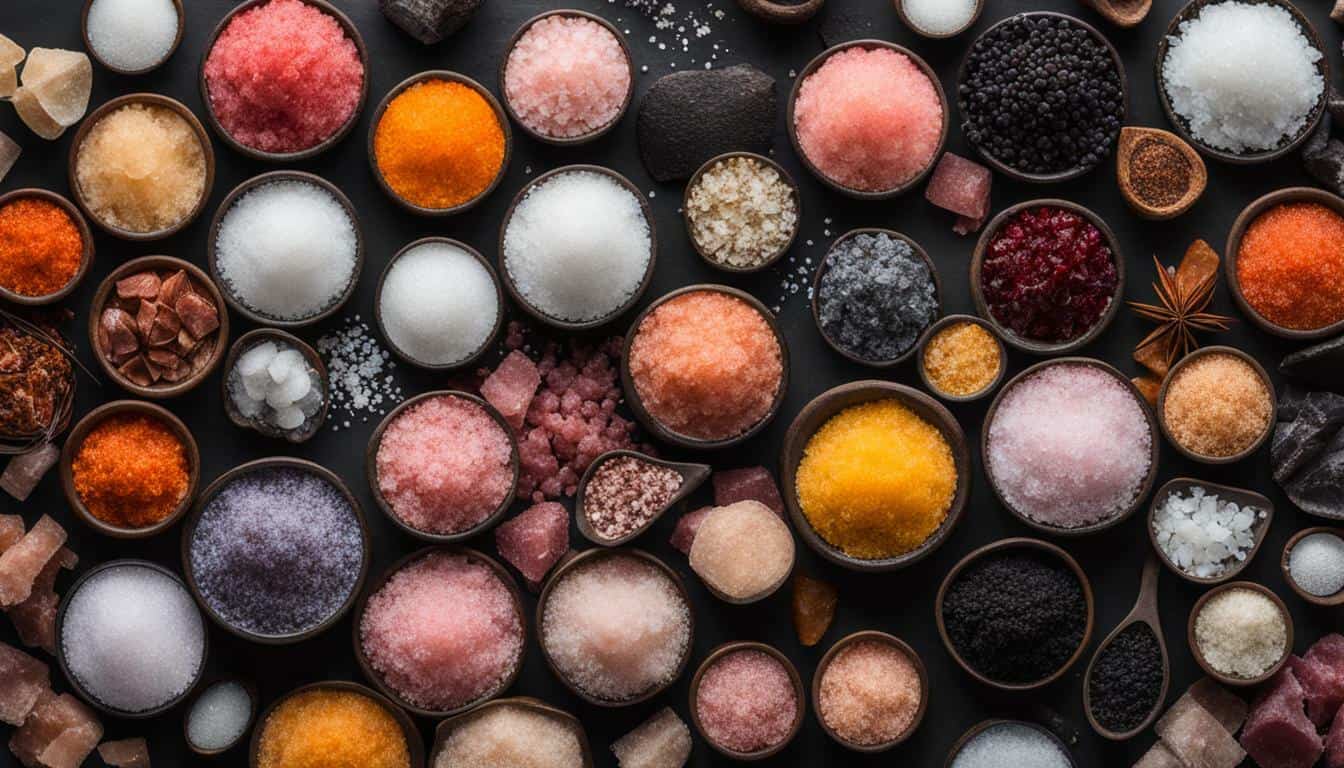
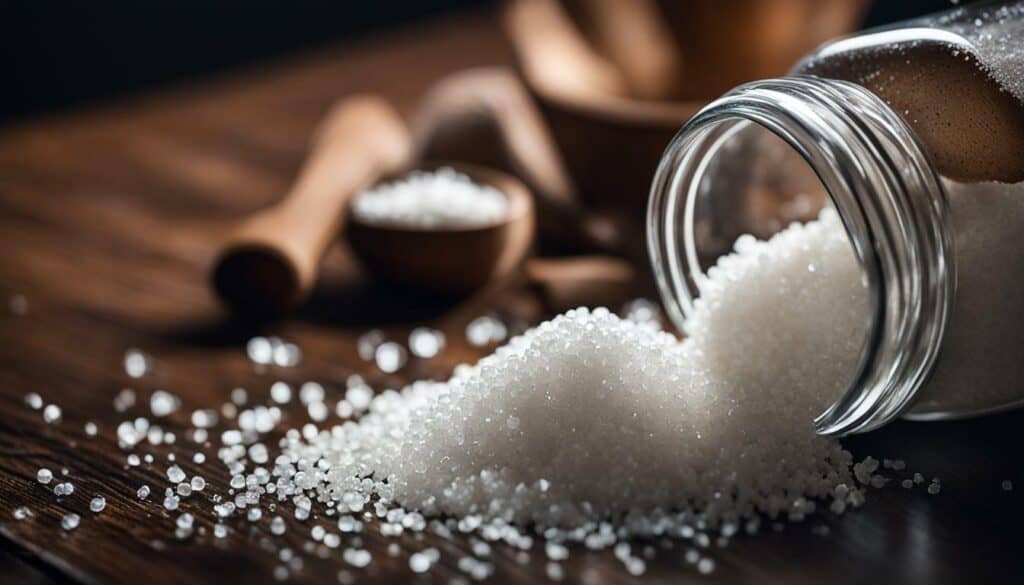

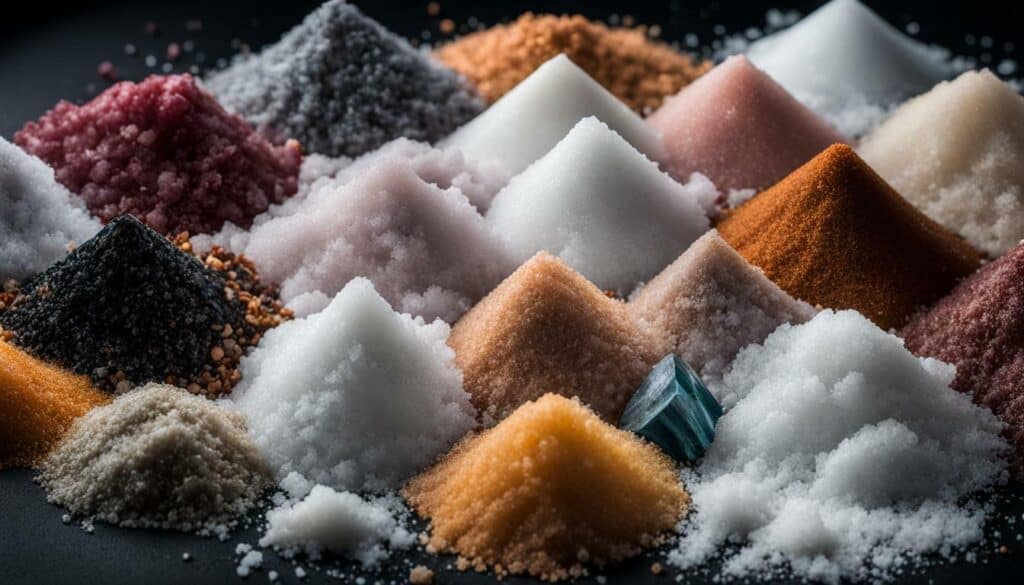



Leave a Reply